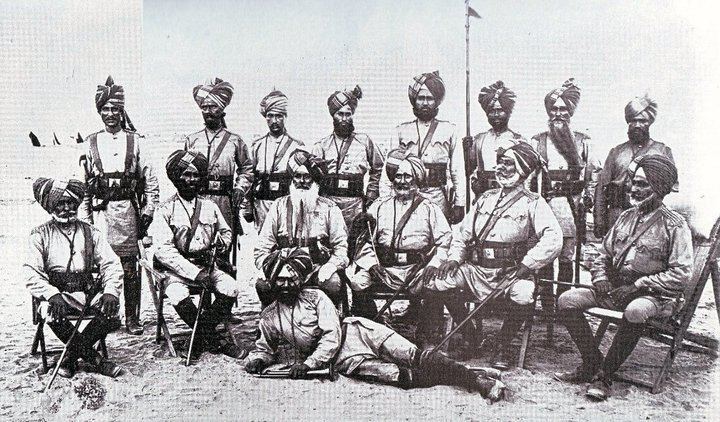Active 1857 – present Type Cavalry Nickname(s) The Flamingoes | Size Regiment | |
 | ||
Branch British Indian ArmyIndian Army | ||
4th Horse (Hodson's Horse) is a cavalry regiment of the Indian Army which originated as part of the British Indian Army.
Contents
History
It was raised by Brevet Major William Stephen Raikes Hodson during the Indian Rebellion of 1857, and exists today as the 4th Horse Regiment in the Indian Army. The first risala or troop was raised by Risaldar-Major Man Singh.
The force was raised as an irregular cavalry regiment to assist with putting down the rebellion, and continued as part of the British Indian Army. The official designation has changed several times since the regiment's inception in 1857. In 1859, the regiment was split up into two regiments which survived broadly as the 9th Bengal Lancers and 10th Bengal Lancers. In 1878, the 10th Bengal Lancers came to be known as the "Duke of Cambridge's own." In 1921, the British decided to cut down on the number of cavalry regiments, and re-amalgamated the two as the 10th Duke of Cambridge's Own Lancers (Hodson's Horse).
The regiment fought at the Battle of the Somme and the Battle of Cambrai in the First World War. It still recalls the latter as the regiment's most splendid battle, and celebrates Cambrai Day every year.
The regiment is now an armoured regiment of the post-independence Indian Army.
Name changes
Notable officers
Photographic image, 1858
This is a photograph about whose subjects there is disagreement in reputable academic circles. (1) www.britishempire.co.uk states the Europeans to be: Lt. Clifford Henry Mecham (standing); Major Henry Dermot Daly (seated); The Sikh officer standing at the far left with long beard is given as Man Sing; the Sikh seated on floor as Jai Singh. (2) National Army Museum, London, names the European officers as: Lt. Clifford Henry Mecham (standing); Asst. Surgeon Thomas Anderson (seated). (3) The Bridgman Art Library gives the European officer seated as Major William Stephen Raikes Hodson; officer standing: Lt. McDowell and seated on the ground is Sikh officer Risalder major Man Singh. The attribution to Hodson is surely incorrect, unfortunately, as there is apparently otherwise only one extant image of this famous officer, the engraving printed as frontispiece to his biography "Rider on a Grey Horse", by B.J. Cork, 1958. There appears to be no disagreement as to the title of the photograph, or its year. Reputable officers : Major Bhupinder Singh, Mahavir Chakra, posthumous. 1965 Indo Pak war.
